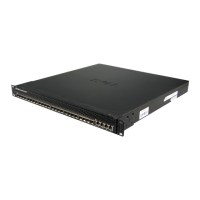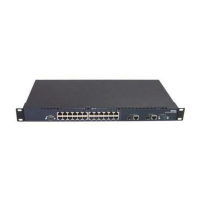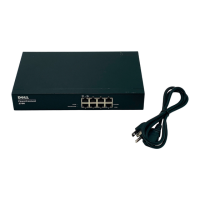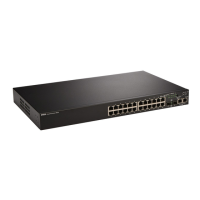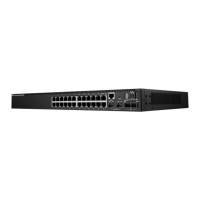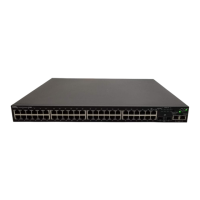1302 PowerConnect B-Series FCX Configuration Guide
53-1002266-01
Example configurations
36
The part of the running-config related to multi-device port authentication would be as follows.
mac-authentication enable
mac-authentication auth-fail-vlan-id 1023
interface ethernet 1
mac-authentication enable
mac-authentication auth-fail-action restrict-vlan
mac-authentication enable-dynamic-vlan
dual-mode
Examples of multi-device port authentication and 802.1X
authentication configuration on the same port
The following examples show configurations that use multi-device port authentication and 802.1X
authentication on the same port.
Example 1
Figure 163 illustrates an example configuration that uses multi-device port authentication and
802.1X authentication n the same port. In this configuration, a PC and an IP phone are connected
to port e 1/3 on a Dell PowerConnect device. Port e 1/3 is configured as a dual-mode port.
The profile for the PC MAC address on the RADIUS server specifies that the PC should be
dynamically assigned to VLAN "Login-VLAN", and the RADIUS profile for the IP phone specifies that
it should be dynamically assigned to the VLAN named "IP-Phone-VLAN". When User 1 is
successfully authenticated using 802.1X authentication, the PC is then placed in the VLAN named
"User-VLAN".
This example assumes that the IP phone initially transmits untagged packets (for example, CDP or
DHCP packets), which trigger the authentication process on the Dell PowerConnect device and client
lookup on the RADIUS server. If the phone sends only tagged packets and the port (e 1/3) is not a
member of that VLAN, authentication would not occur. In this case, port e 1/3 must be added to
that VLAN prior to authentication.
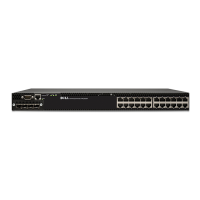
